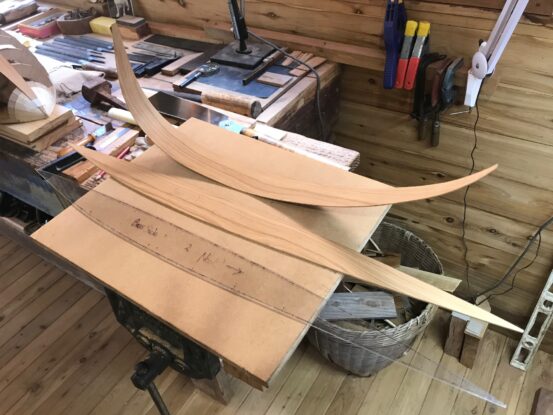I have been trying my hand at cutting, planing, scraping, bending and shaping a lute rib, using an off-cut of native cypress….
The rib is 1.5mm thick. After a bit of trial and error – chiefly error – I managed to bend it to the required curve, using the heated bending iron (which is maintained at an even temperature).
So far so good….





Looking good!–impressive craftsmanship.
Thanks Geoff. Certainly negotiating a few learning curves all at once….
Im amazed you can bend such a thin slice of native cypress without splitting. As you know I’ve turned very-well cured callitris…over a couple of sessions to let it dry out further…but it still splits
Greetings Ian. I don’t have an answer to that. No problems here so far, but we shall see. Certainly native cypress has to be handled with care, since it is quite brittle.
I’m also amazed with this callitris. It moves, splits and warps. I love it for campfirewood for its smell and calorific value. We built an indoor/outdoor room in Sydney with it – beautiful. This must be the best-seasoned callitris in the world!
I think it is just a matter of taking time with the work – bit by bit.
Any wood can be used for lute ribs; lute soundboards, however, need to have a good resonating quality.
Beautiful work Chris–the family of spoons and this lute are superb
Greetings Richard. I am pretty fond of my boat spoons – as you say, a sort of family.
I have located a beautiful piece of native cypress for the lute ribs: golden coloured, and entirely free of knots: perfect. I am busy cutting it up with my Japanese Saw.
It is slow going, but I enjoy the slowness: a time of reflection….